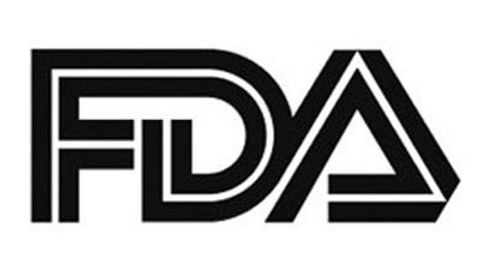Ripretinib Recognized by FDA and NCCN for Treatment of Second-Line GIST
Ripretinib now has 2 breakthrough therapy designations from the FDA and has been added to the NCCN guidelines for gastrointestinal stromal tumor.

The FDA has granted a breakthrough therapy designation (BTD) to ripretinib (Qinlock) for the treatment of adult patients with unresectable or metastatic gastrointestinal stromal tumor (GIST) who received prior treatment with imatinib (Gleevec) and harbor a KIT exon 11 mutation and co-occurring KIT exon 17 and/or 18 mutations. Ripretinib has also been added to the National Comprehensive Cancer Network (NCCN) Clinical Practice Guidelines in Oncology (NCCN Guidelines).1
Results from the exploratory ctDNA analysis of the phase 3 INTRIGUE study (NCT03673501) serve as basis for the both the first FDA BTD and the addition of ripretinib to the NCCN guidelines us based on primary analysis data from the study. INTRIGUE showed that ripretinib had comparable progression-free survival (PFS) rates with sunitinib (Sutent).
“INTRIGUE demonstrated that ripretinib and sunitinib had similar disease control outcomes for a molecularly unselected population of patients with advanced GIST who have progressed following imatinib. Importantly, for most patients, ripretinib had a more favorable side effect profile. In addition, the embedded analysis of molecular subsets of patients with imatinib resistant GIST, demonstrates groups which benefit primarily from sunitinib [KIT exon 9 mutations] and those that appear to benefit primarily from ripretinib [KIT exon11/17 mutations]. Additional studies are planned to further explore a molecularly defined treatment approach to this population,” Suzanne George, MD, director of Clinical Research, Sarcoma Center, senior physician at Dana-Farber Cancer Institute, and associate professor of Medicine, Harvard Medical School, told Targeted Oncology™.
In the study of 453 patients, the median PFS 8.0 months with ripretinib compared with 8.3 months for the sunitinib arm (HR, 1.05; 95% CI, 0.82-1.33; P = .72) in the all-patient intent-to-treat (ITT) population. In the KIT exon 11 mutation ITT population, the median PFS was prolonged with ripretinib at 8.3 months vs 7.0 months with sunitinib (HR, 0.88, 95% CI, 0.66-1.16; P = .36).2
Overall survival (OS) has not reached a median in the ripretinib arm, but patients in the sunitinib arm had a median OS of 17.5 months (HR, 0.34, nominal P =. 0061).
Ripretinib also showed a numerically higher overall response rate (ORR) compared with sunitinib in the all-patient ITT population ad KIT exon 11 ITT population. The ORR was 21.7% with ripretinib vs 17.6% with sunitinib in the all-patient ITT group (95% CI, -3.2 to 11.5; nominal P = .27). In the KIT exon 11 ITT population, the ORR shown with ripretinib was 23.9% compared with 14.6% in the sunitinib arm (95% CI, 0.7-17.8; nominal P = .03).
Safety results showed that ripretinib was well-tolerated in patients with advanced GIST. There were fewer grade 3 and 4 treatment-emergent adverse events (TEAEs) in the ripretinib arm (41.3%) compared with the sunitinib arm (65.6%). The TEAEs observed in the ripretinib arm vs the sunitinib arm were hypertension (8.5% vs 26.7%), palmar-plantar erythrodysesthesia (1.3% vs 10.0%), neutropenia (0% vs 6.3%), and neutrophil count decreased (0% vs 7.2%). Ripretinib was also considered to be tolerable based on patient-reported outcomes of less deterioration in their ability to engage in either work or leisure activities during treatment, and fewer cases of moderate to extremely large impact on their lives due to skin toxicity across treatment cycles compared with patients treated with sunitinib.
“Ripretinib is really notable for a very favorable safety and tolerability profile,” said George.
A prior BTD was granted by the FDA for patients who harbor KIT exon 11 mutation and co-occurring KIT exon 17 and/or 18 mutations was granted based on exploratory analysis data from INTRIGUE. In 52 patients with KIT exon 11 and exon 17/18, only clinical benefit was significantly improved with ripretinib vs sunitinib.1
The median PFS was 14.2 months in the ripretinib arm compared with 1.5 months in the sunitinib arm (HR, 0.22; 95% CI, 0.11-0.44; nominal P < .0001). The median OS was not estimable in the ripretinib arm compared with 17.5 months in the sunitinib arm (HR, 0.34; 0.15-0.76; nominal P = .0061). Ripretinib also showed an ORR of 44.4% compared with an ORR of 0% in the sunitinib arm (95% CI, 23.0%-62.7%; P =. 0001).
“…If approved, we believe [ripretinib] has the potential to become the standard-of-care for this group of second-line GIST patients around the world. GIST key opinion leaders and physicians have long been proponents of clinical drug development targeted at specific molecular subtypes of GIST, and we are pleased with the FDA’s recognition that the ctDNA data indicates [ripretinib] may demonstrate substantial improvement over the current standard-of-care in this population,” said Steve Hoerter, president and chief executive officer of Deciphera Pharmaceuticals, in a press release.
REFERENCES:
1. Deciphera Pharmaceuticals announces QINLOCK® included in NCCN Guidelines® for the treatment of second-line GIST patients and FDA grants breakthrough therapy designation for QINLOCK in second-line GIST patients with mutations in KIT Exon 11 and 17/18. News release. Deciphera Pharmaceuticals. March 14, 2023. March 15, 2023. https://bit.ly/3ZQDEnj
2. Heinrich MC, Jones RL, Gelderblom H, et al. INTRIGUE: A phase III, randomized, open-label study to evaluate the efficacy and safety of ripretinib versus sunitinib in patients with advanced gastrointestinal stromal tumor previously treated with imatinib. J Clin Oncol. 2022;40(36): 359881-359881. doi:0.1200/JCO.2022.40.36_suppl.359881